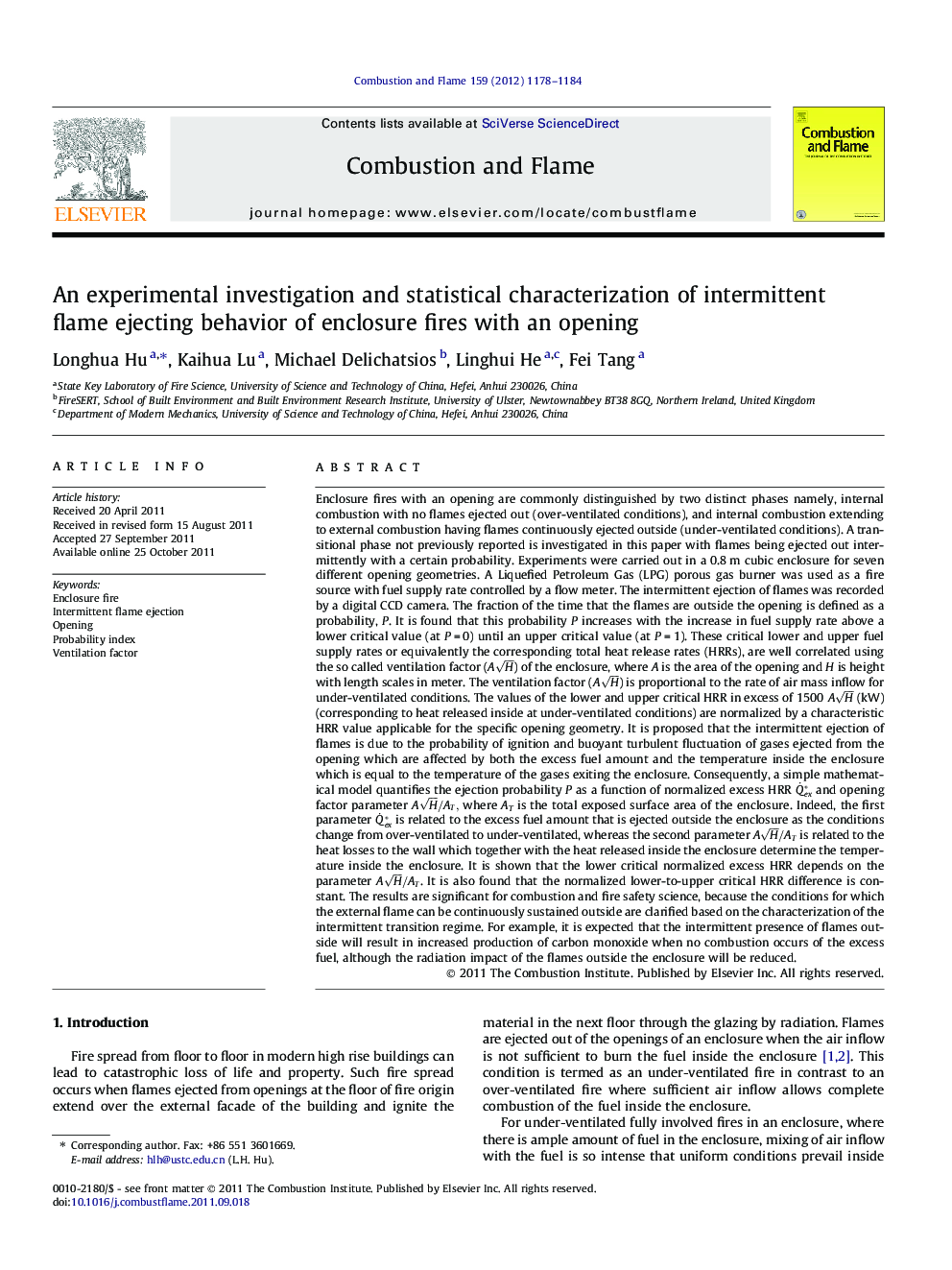| کد مقاله | کد نشریه | سال انتشار | مقاله انگلیسی | نسخه تمام متن |
|---|---|---|---|---|
| 169054 | 457973 | 2012 | 7 صفحه PDF | دانلود رایگان |

Enclosure fires with an opening are commonly distinguished by two distinct phases namely, internal combustion with no flames ejected out (over-ventilated conditions), and internal combustion extending to external combustion having flames continuously ejected outside (under-ventilated conditions). A transitional phase not previously reported is investigated in this paper with flames being ejected out intermittently with a certain probability. Experiments were carried out in a 0.8 m cubic enclosure for seven different opening geometries. A Liquefied Petroleum Gas (LPG) porous gas burner was used as a fire source with fuel supply rate controlled by a flow meter. The intermittent ejection of flames was recorded by a digital CCD camera. The fraction of the time that the flames are outside the opening is defined as a probability, P. It is found that this probability P increases with the increase in fuel supply rate above a lower critical value (at P = 0) until an upper critical value (at P = 1). These critical lower and upper fuel supply rates or equivalently the corresponding total heat release rates (HRRs), are well correlated using the so called ventilation factor (AH) of the enclosure, where A is the area of the opening and H is height with length scales in meter. The ventilation factor (AH) is proportional to the rate of air mass inflow for under-ventilated conditions. The values of the lower and upper critical HRR in excess of 1500AH (kW) (corresponding to heat released inside at under-ventilated conditions) are normalized by a characteristic HRR value applicable for the specific opening geometry. It is proposed that the intermittent ejection of flames is due to the probability of ignition and buoyant turbulent fluctuation of gases ejected from the opening which are affected by both the excess fuel amount and the temperature inside the enclosure which is equal to the temperature of the gases exiting the enclosure. Consequently, a simple mathematical model quantifies the ejection probability P as a function of normalized excess HRR Q˙ex∗ and opening factor parameter AH/AT, where AT is the total exposed surface area of the enclosure. Indeed, the first parameter Q˙ex∗ is related to the excess fuel amount that is ejected outside the enclosure as the conditions change from over-ventilated to under-ventilated, whereas the second parameter AH/AT is related to the heat losses to the wall which together with the heat released inside the enclosure determine the temperature inside the enclosure. It is shown that the lower critical normalized excess HRR depends on the parameter AH/AT. It is also found that the normalized lower-to-upper critical HRR difference is constant. The results are significant for combustion and fire safety science, because the conditions for which the external flame can be continuously sustained outside are clarified based on the characterization of the intermittent transition regime. For example, it is expected that the intermittent presence of flames outside will result in increased production of carbon monoxide when no combustion occurs of the excess fuel, although the radiation impact of the flames outside the enclosure will be reduced.
Journal: Combustion and Flame - Volume 159, Issue 3, March 2012, Pages 1178–1184